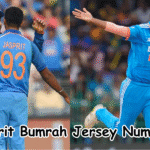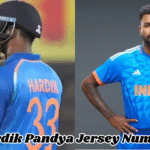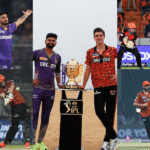Cricket has long been a sport steeped in tradition—from the timeless rhythm of red-ball Test matches to the fast-paced thrill of T20s. For generations, fans and analysts have leaned on instinct, expert commentary, and historical narratives to make sense of the game. But in recent years, a new force has reshaped the way cricket is understood: data.
The rise of sports analytics has changed not just how players train and compete, but also how fans engage. Watching cricket in 2025 is no longer just about the match; it’s about understanding the numbers behind every delivery. From real-time win probabilities to player heat maps and predictive performance models, data now powers the modern cricket experience.
This shift is especially important for sports bettors. With better access to meaningful metrics, today’s fans aren’t just watching, they’re interpreting, forecasting, and making smarter calls. Here’s how it’s all playing out.
Stats Are No Longer Just for Experts
Not long ago, you needed a spreadsheet and a stats degree to make sense of cricket analytics. Now, platforms break down every metric in easy-to-understand formats. Visual dashboards show strike rates by over, average lengths bowled to each batter, and expected wicket percentages based on pitch conditions.
Broadcasters incorporate data-driven insights into live commentary, helping viewers instantly grasp the logic behind a captain’s decision or a bowler’s change of angle. This access brings fans closer to the strategy of the game, turning casual watchers into informed analysts.
These tools don’t just benefit fans. Bettors looking for betting insights can assess in-play changes with greater accuracy. With so much real-time data available, decisions around totals, partnerships, or even ball-by-ball markets can be backed by more than just instinct.
Predictive Models Are Shaping Betting Strategies
Predictive modeling has made a big leap forward in cricket. Machine learning algorithms now consider dozens of live and historical variables, such as pitch wear, bowler fatigue, and boundary sizes to forecast outcomes more accurately than ever.
For example, before a T20 match even begins, advanced models may suggest that chasing teams at a certain ground win 63% of the time. That’s not just trivia. It’s betting predictions fuel. And when those models update every few balls, the edge becomes dynamic.
This doesn’t mean bettors will always be right. But it does mean they’re making decisions based on something more solid than a hunch. These tools help users spot trends, test assumptions, and avoid common biases like recency or overreliance on star players.
That’s where resources like FanDuel Sportsbook come in. With live data integration and intuitive interfaces, the platform helps bettors keep pace with the flow of the game, translating raw stats into actionable information without overwhelming the user with complexity.
In-Play Betting Adds Functionality and Thrills
For many, watching cricket used to mean sitting through the ebbs and flows of an innings. Today, it’s a multi-screen experience. As the match unfolds on one screen, fans track player metrics, win probabilities, and betting markets on another.
In-play betting has evolved from basic over/under calls to moment-by-moment decisions that rely on betting news and live data feeds. Fans can assess a spinner’s effectiveness after their first over, or judge the likelihood of a batter scoring a fifty based on strike rate and pitch behavior.
This shift also encourages a deeper understanding of the game. You’re no longer watching a match in isolation; you’re reading its story in numbers, constantly evaluating how new information changes the narrative.
Of course, that demands a responsible approach. While data sharpens decision-making, it’s never a guarantee. The smartest bettors treat data as a guide, not a promise, and know when to step back if the numbers aren’t aligning.
How Teams Use Data to Gain Tactical Advantage
Teams aren’t just using data after the fact. They’re building strategies around it before a single ball is bowled.
Bowling coaches analyze batter weaknesses based on pitch maps from previous matches. Batting lineups are adjusted based on historical success against specific bowlers or matchups. Even field placements are optimized using heat maps and run-flow charts.
All of this trickles down to the viewing experience. When a captain places a short third and a deep square for a specific batter, fans in 2025 aren’t scratching their heads; they’re nodding, knowing the stats that support the strategy.
Bettors, too, benefit from this transparency. Tactical shifts are no longer just educated guesses; they’re part of a broader data narrative that can inform betting decisions. If a bowler is consistently used in the death overs and takes most of their wickets there, it can influence how certain prop bets are evaluated.
What to Watch for Next
As cricket becomes more data-driven, the fan experience will continue to evolve. Expect to see:
- Deeper integration of data into live broadcasts,
- More personalized insights delivered through apps and wearable tech,
- Growing use of AI for real-time betting predictions and scenario analysis.
For bettors, staying informed will remain essential. Data can provide a sharper view of the game, but only when used wisely. Understanding context, like weather, pressure situations, and individual form, is still key.
The takeaway? Stats don’t replace intuition. They enhance it. And in a game where momentum can shift in a single delivery, that enhancement makes all the difference.
Cricket’s Numbers Game Is Just Getting Started
Cricket has always had layers of technique, strategy, and atmosphere. Now, data adds a new one. It’s not changing the spirit of the game, just how people experience it.
For fans who crave more than just entertainment, this is a golden era. And for those who use data to guide their betting insights, the game is more engaging, dynamic, and interactive than ever.
Cricket isn’t just played on the pitch anymore; it’s played in stats, probabilities, and predictions. And if you know how to read them, you’re watching a different game entirely. One that’s smarter, faster, and more connected to the numbers that shape every run.











